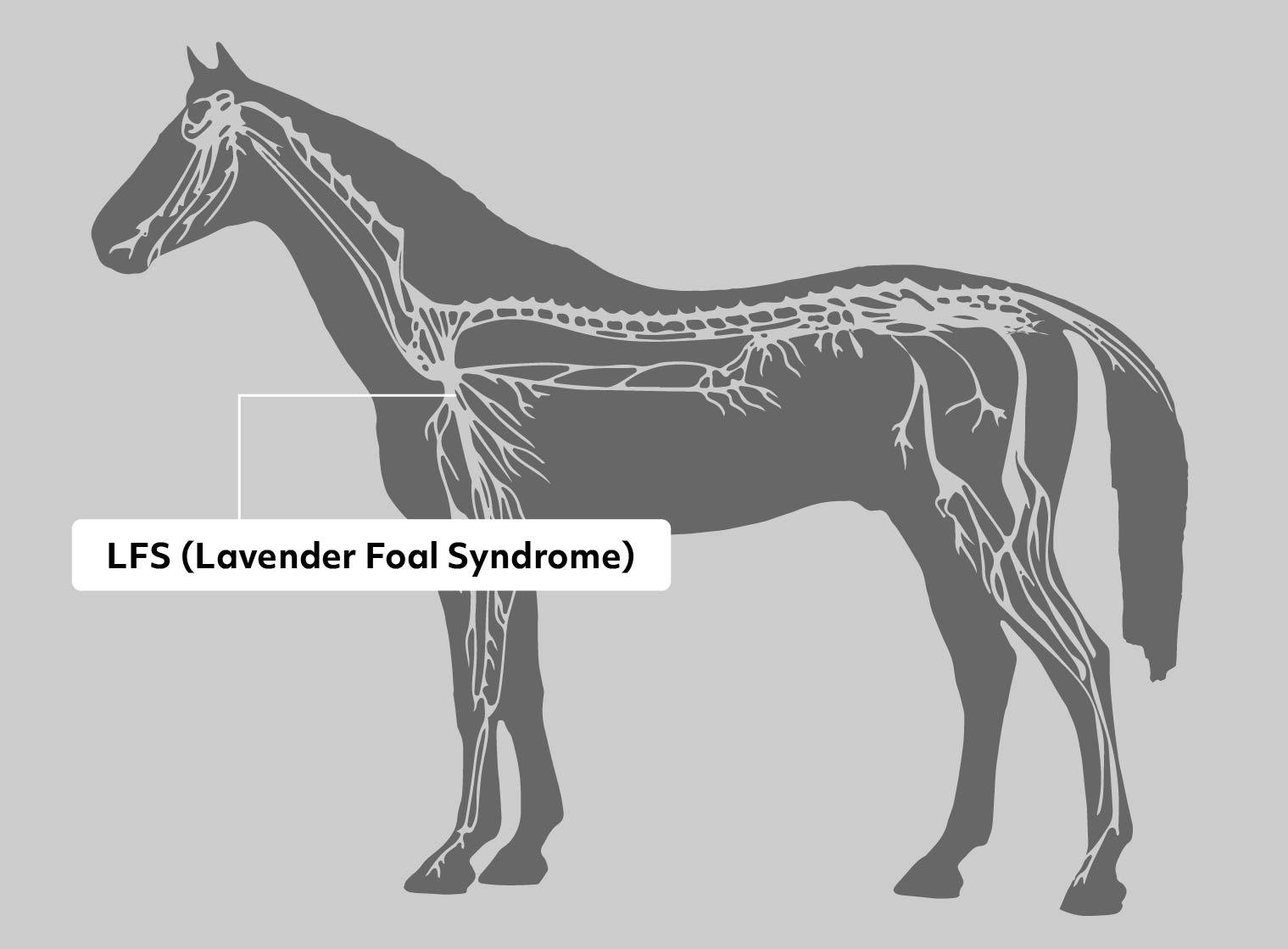Lavender Foal Syndrome (LFS)
Gene or Region: MYO5A
Reference Variant: C
Mutant Variant: -
Affected Breeds: Arabian
Research Confidence: High confidence - Findings reproduced multiple studies
Explanation of Results: lfs/lfs = homozygous for Lavender Foal Syndrome, lethal lfs/n = heterozygous for Lavender Foal Syndrome, carrier n/n = no variant detected
General Description for Lavender Foal Syndrome
Lavender Foal Syndrome (LFS), also known as coat color dilution lethal, is a neurological dysfunction in newborn foals. Symptoms are apparent at birth and include seizures, severe hyper-extension of limbs, neck and back, stiff paddling leg movements, involuntary eye movement and inability to stand or sit upright. The coat usually has a dilute color that ranges in shade from silver to a pale lavender/pink. As there is no treatment, affected foals are humanely euthanized. LFS is an autosomal recessive condition, thus a horse must inherit two copies of the allele (LFS/LFS) to show any signs. Horses with only one copy of the allele (LFS/n) are known as carriers due to their ability to produce affected foals.
Gene Information
MYO5A functions as part of a trafficking complex that serves to move important molecules in pigment cells and neurons. Mutations in humans result in Griscelli syndrome, which is characterized by dilute hair and neurological dysfunction. The LFS mutation is a single base deletion that results in a premature stop codon, and thus a truncated protein.
References
Brooks SA et al., “Whole-genome SNP association in the horse: identification of a deletion in myosin Va responsible for Lavender Foal Syndrome.” (2010) PLoS Genet. 6: e1000909. PMID: 20419149
Gabreski NA et al., “Investigation of allele frequencies for Lavender foal syndrome in the horse.” (2012) Anim Genet. 43: 650. PMID: 22497275
Tarr CJ et al., “The carrier prevalence of severe combined immunodeficiency, lavender foal syndrome and cerebellar abiotrophy in Arabian horses in South Africa.” (2014) Equine Vet J. 46: 512-4. PMID: 24033554
More Horse Health
Equine Herpes Virus Type 1 & Induced Myeloencephalopathy
Equine herpesviruses are DNA viruses that are found in most horses all over the world, often without any serious side effects. Following infection of Equine Herpesvirus Type 1 (EHV-1) some horses then suffer Equine Herpesvirus Myeloencephalopathy (EHM), which is is accompanied by serious and sometimes fatal neurological effects. EHM in horses can have serious neurological symptoms on affected horses.
Equine Metabolic Syndrome / Laminitis Risk
Equine Metabolic Syndrome (EMS) is a wide-spread issue in the horse population. Primarily characterized by hyperinsulinemia (excess insulin circulating in the blood in relation to glucose levels), this metabolic disorder is often present in obese horses and ponies and can be challenging to diagnose as it can be misdiagnosed as "Cushing's" (a pituitary disfunction).
Equine Recurrent Uveitis Risk and Severity
Equine Recurrent Uveitis (ERU) is the most common cause of blindness in horses, affecting about 3-15% of the horse population worldwide. Characterized by episodes of inflammation of the middle layer of the eye, Equine Recurrent Uveitis in horses leads to the development of cataracts, glaucoma and eventually complete loss of vision.
